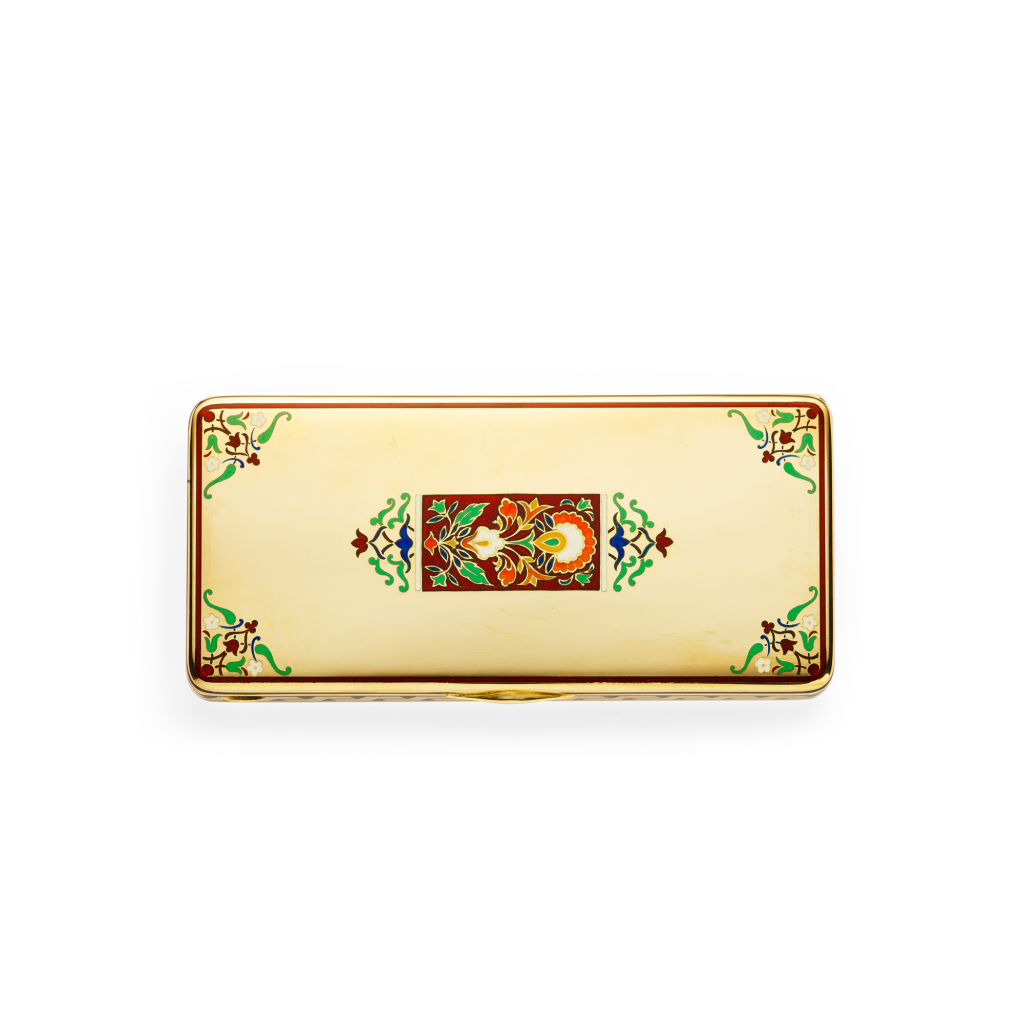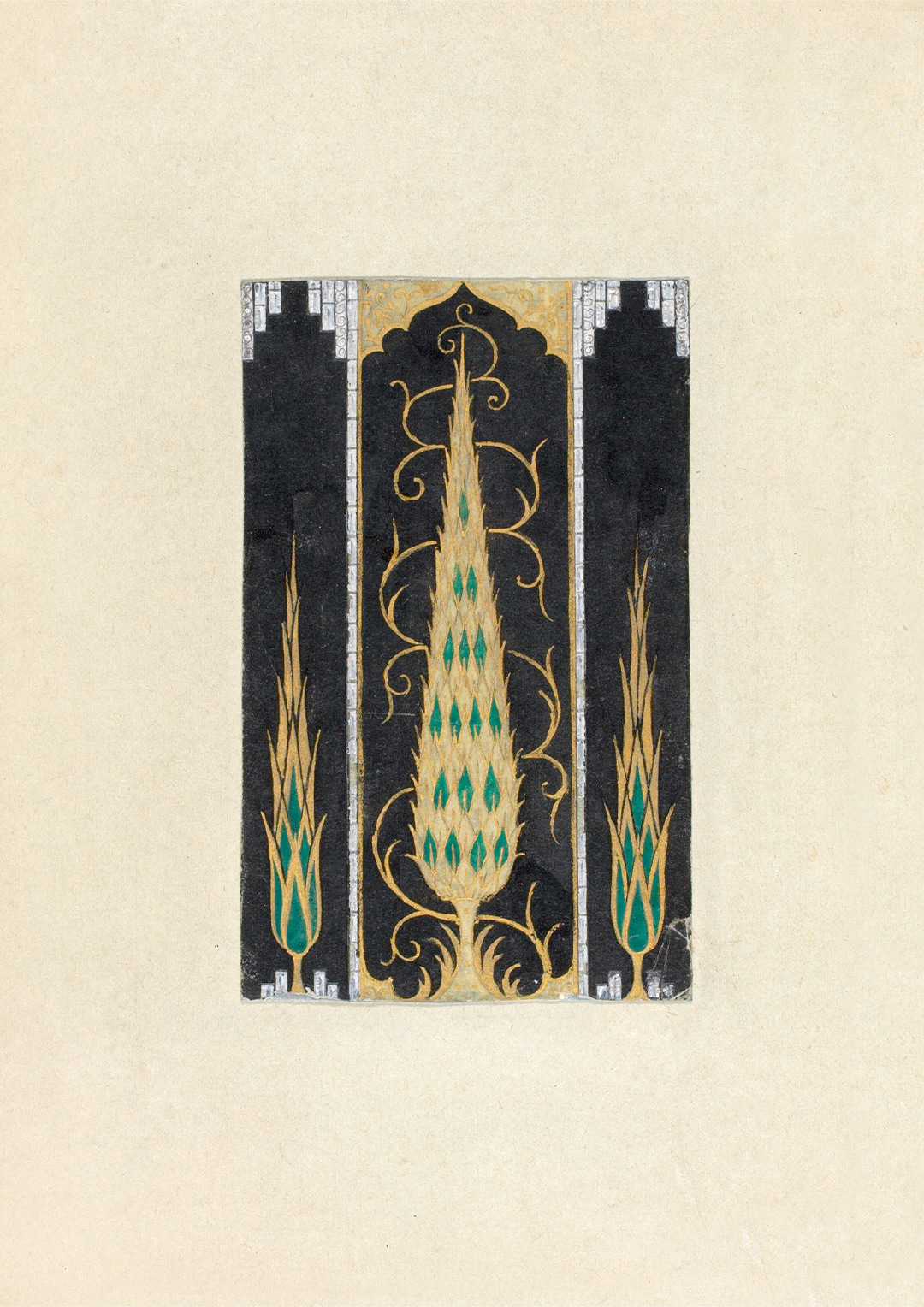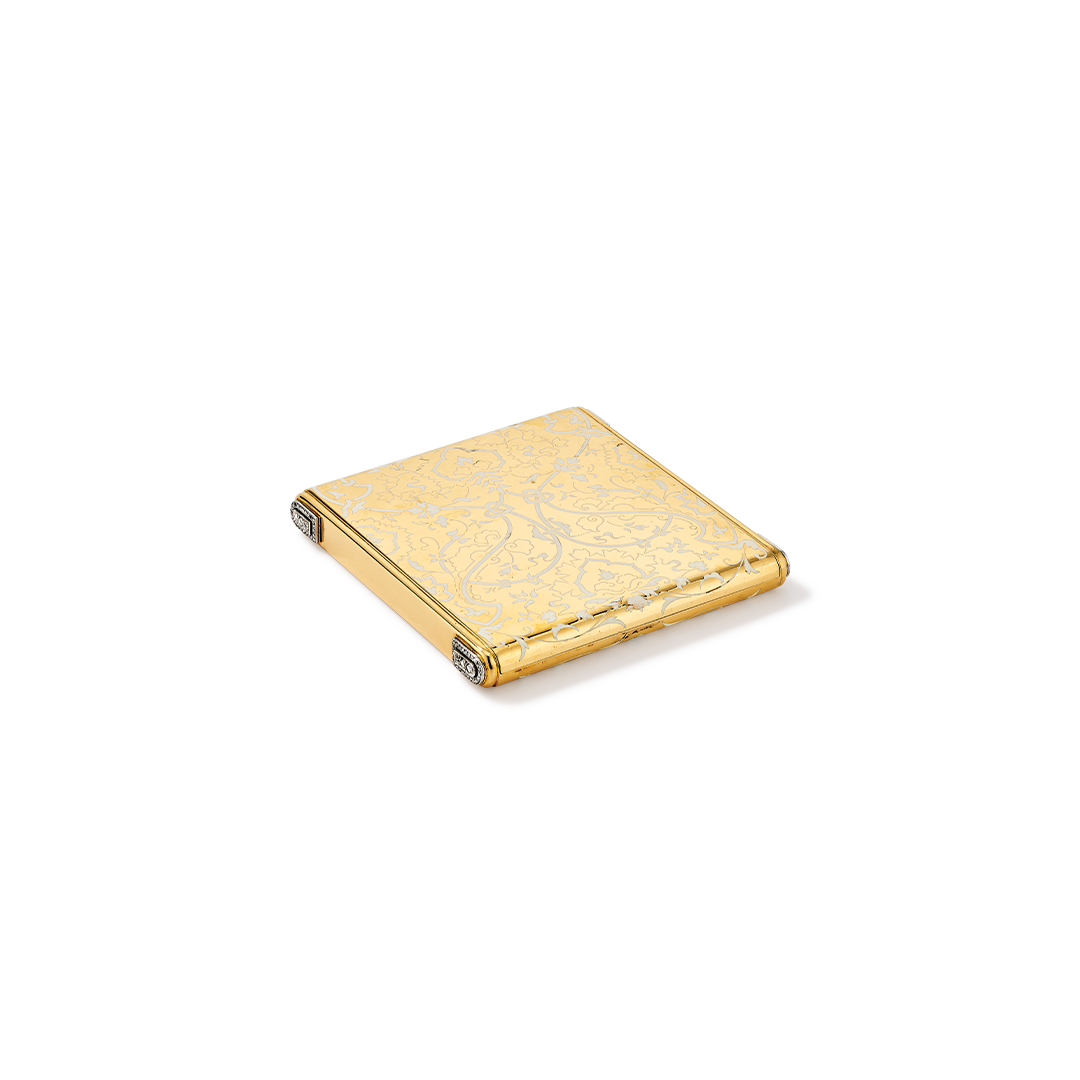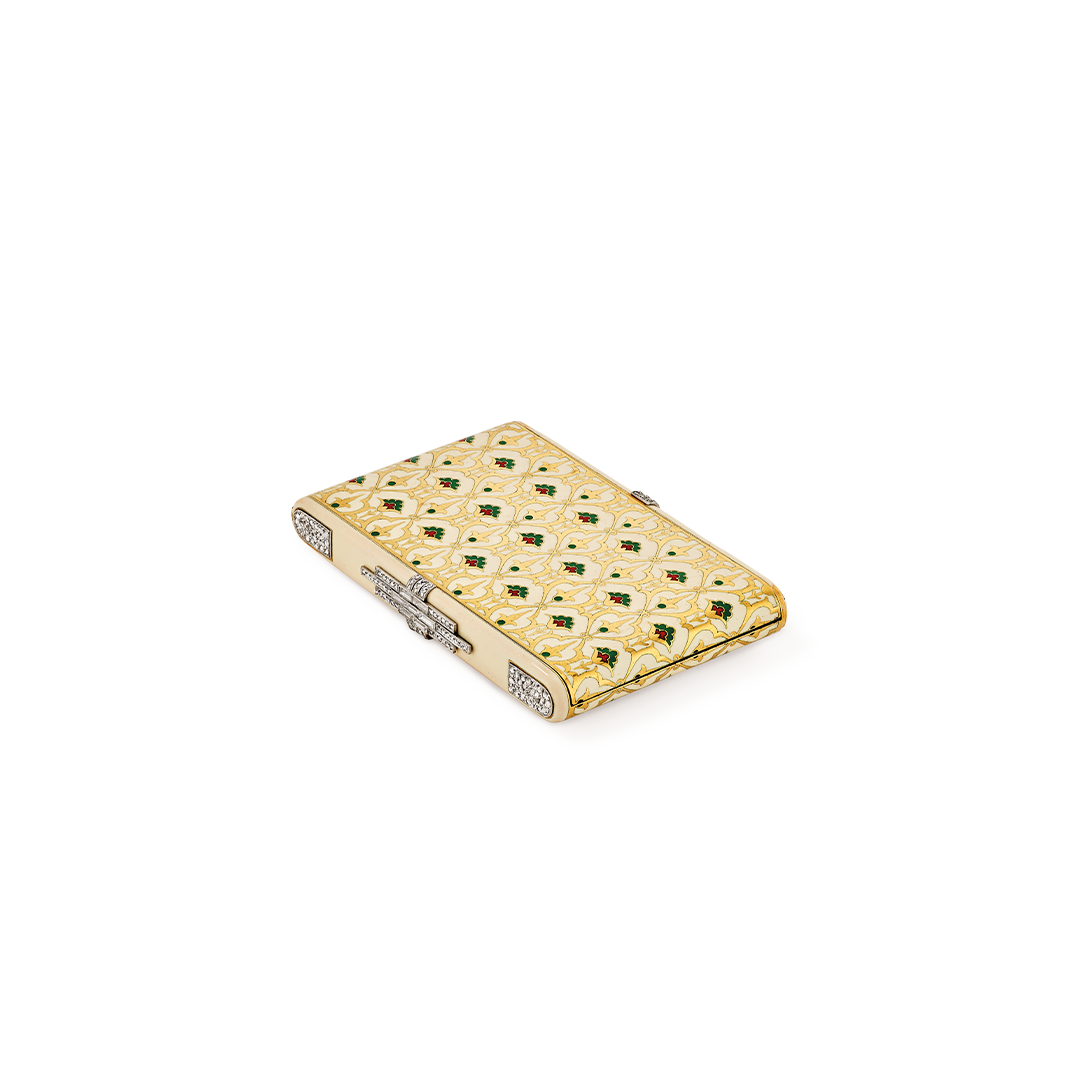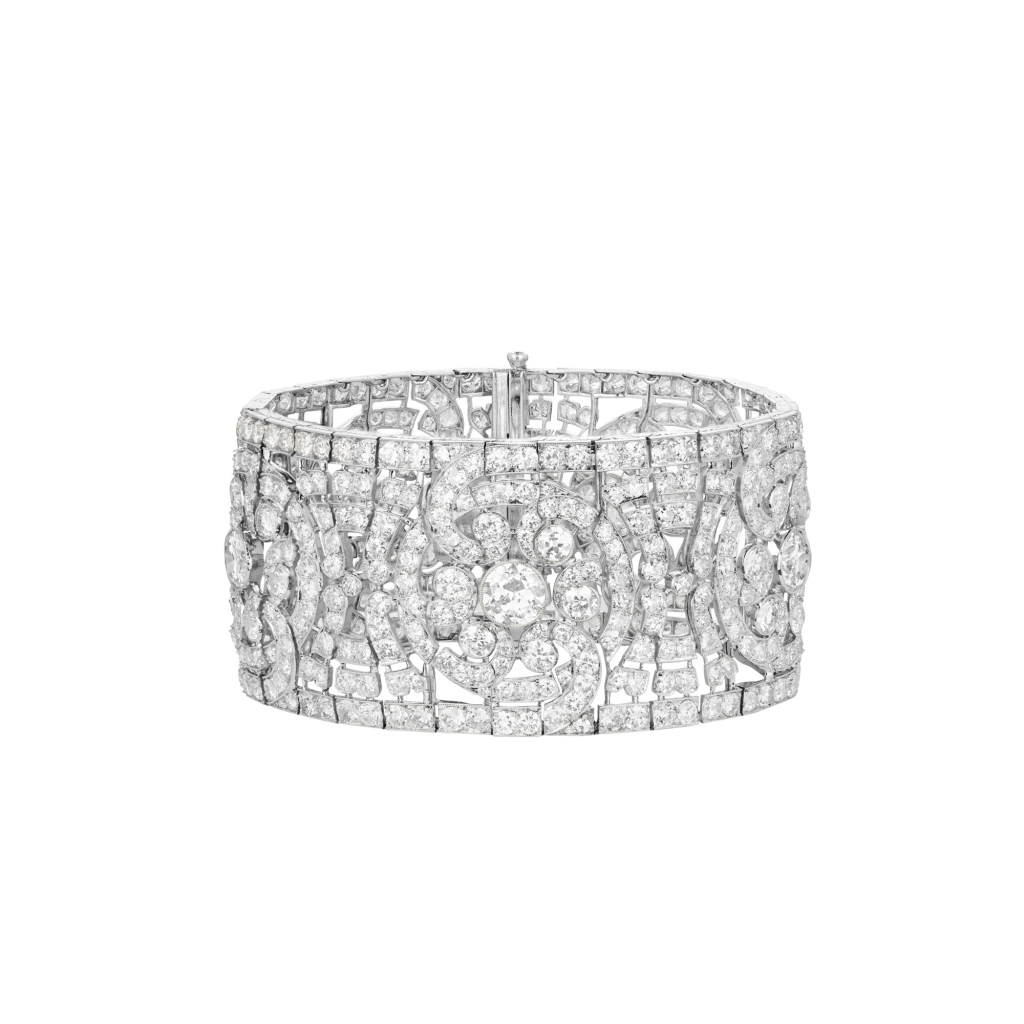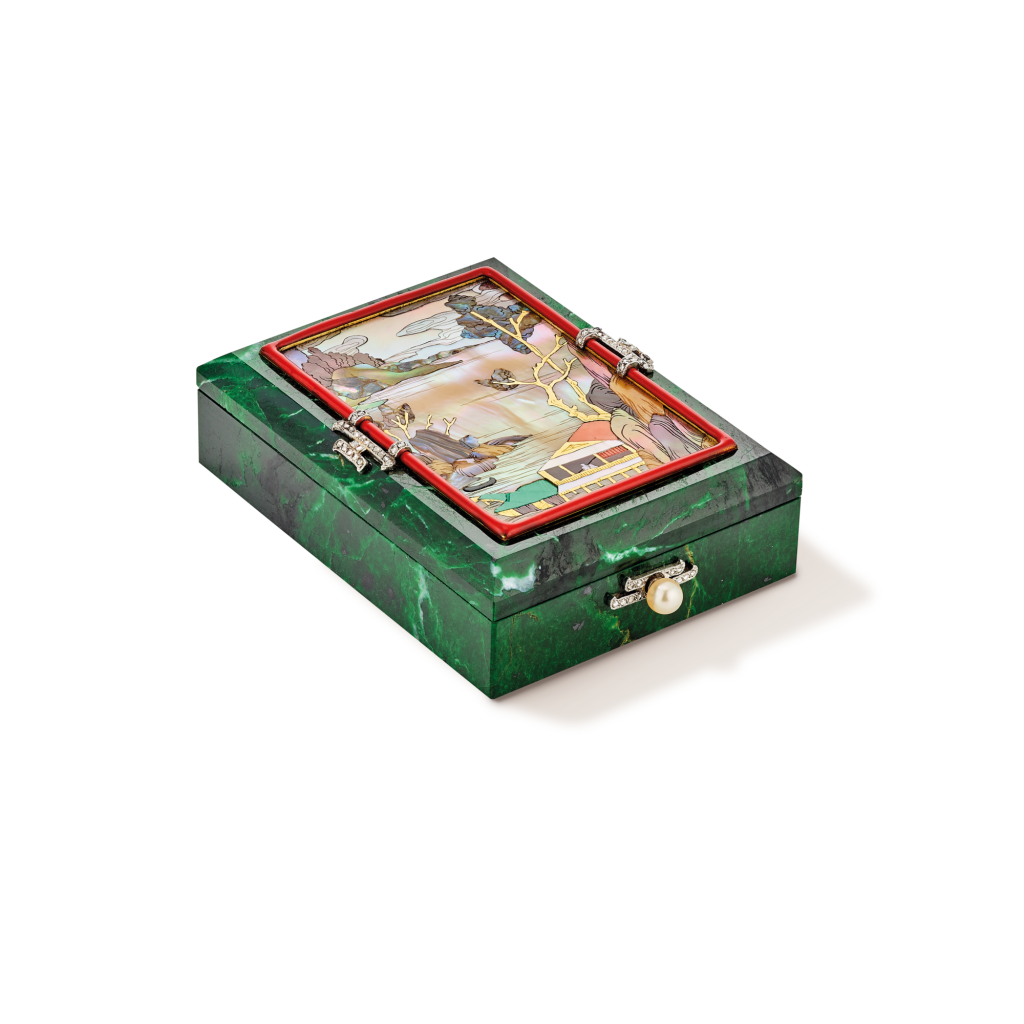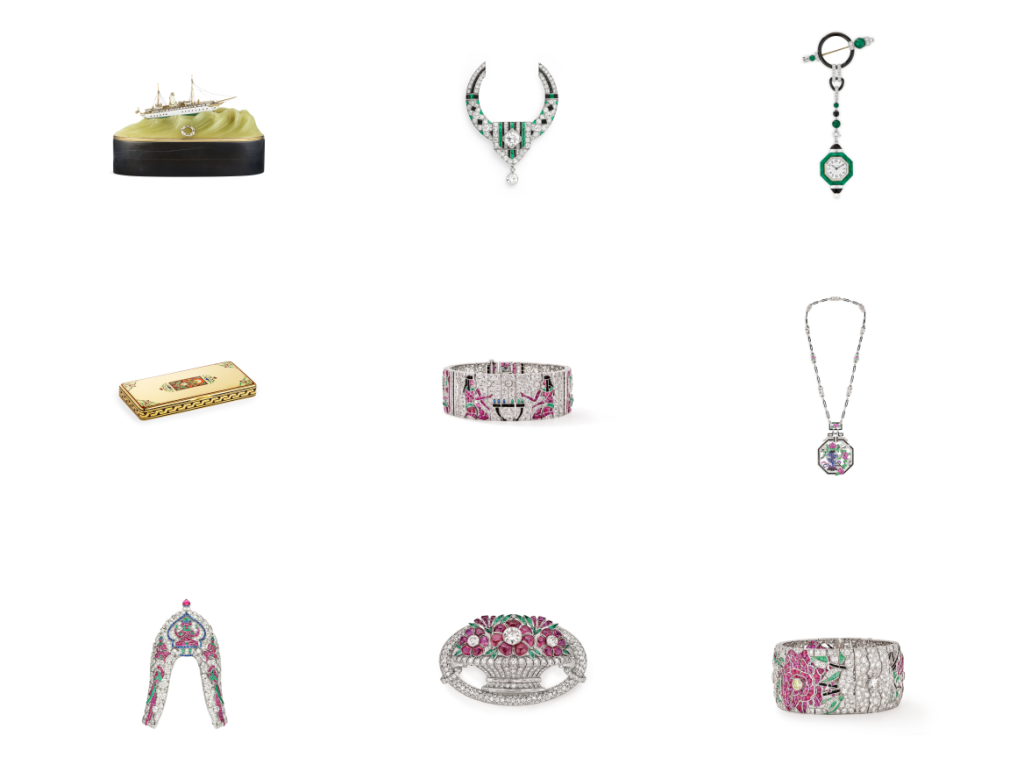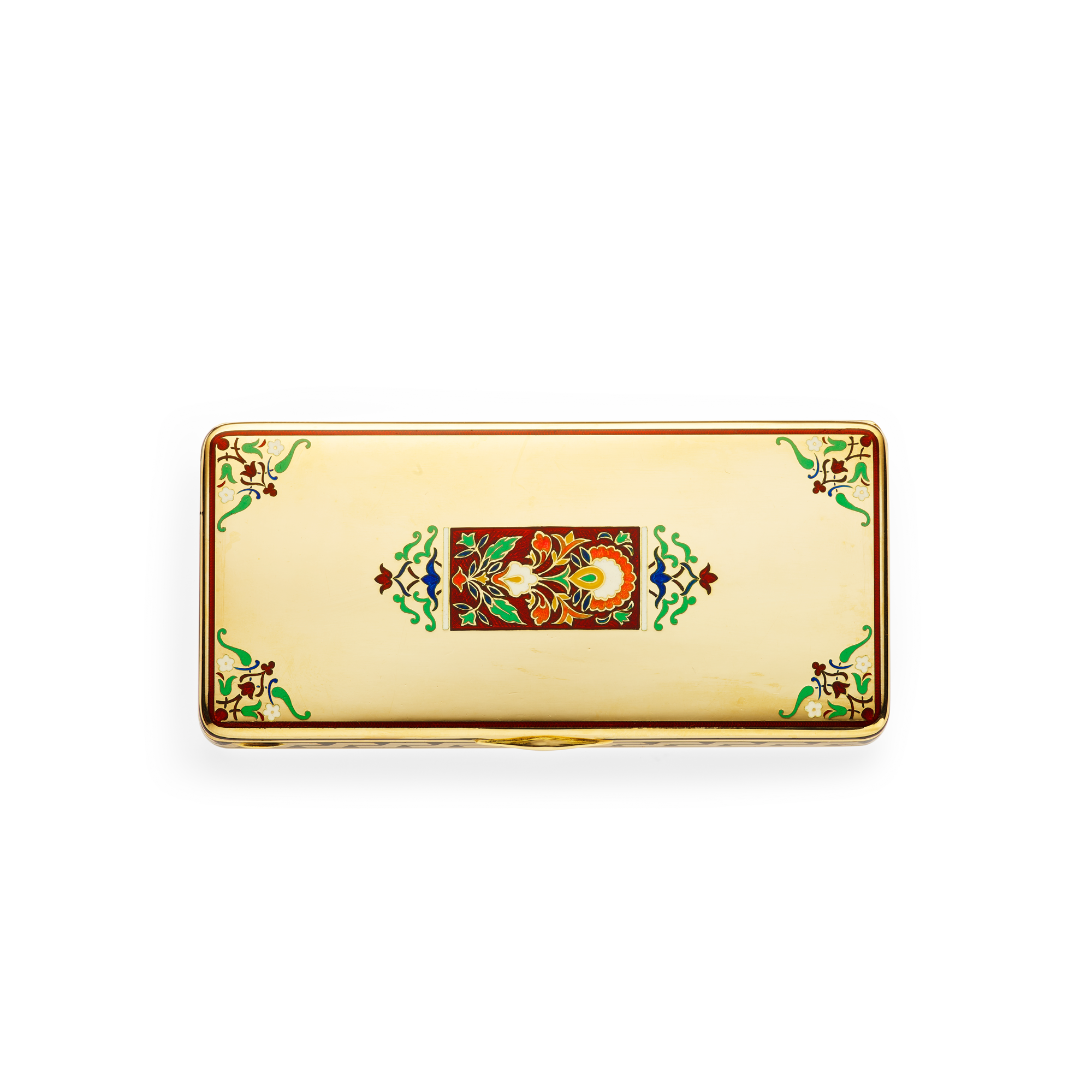
Cigarette case

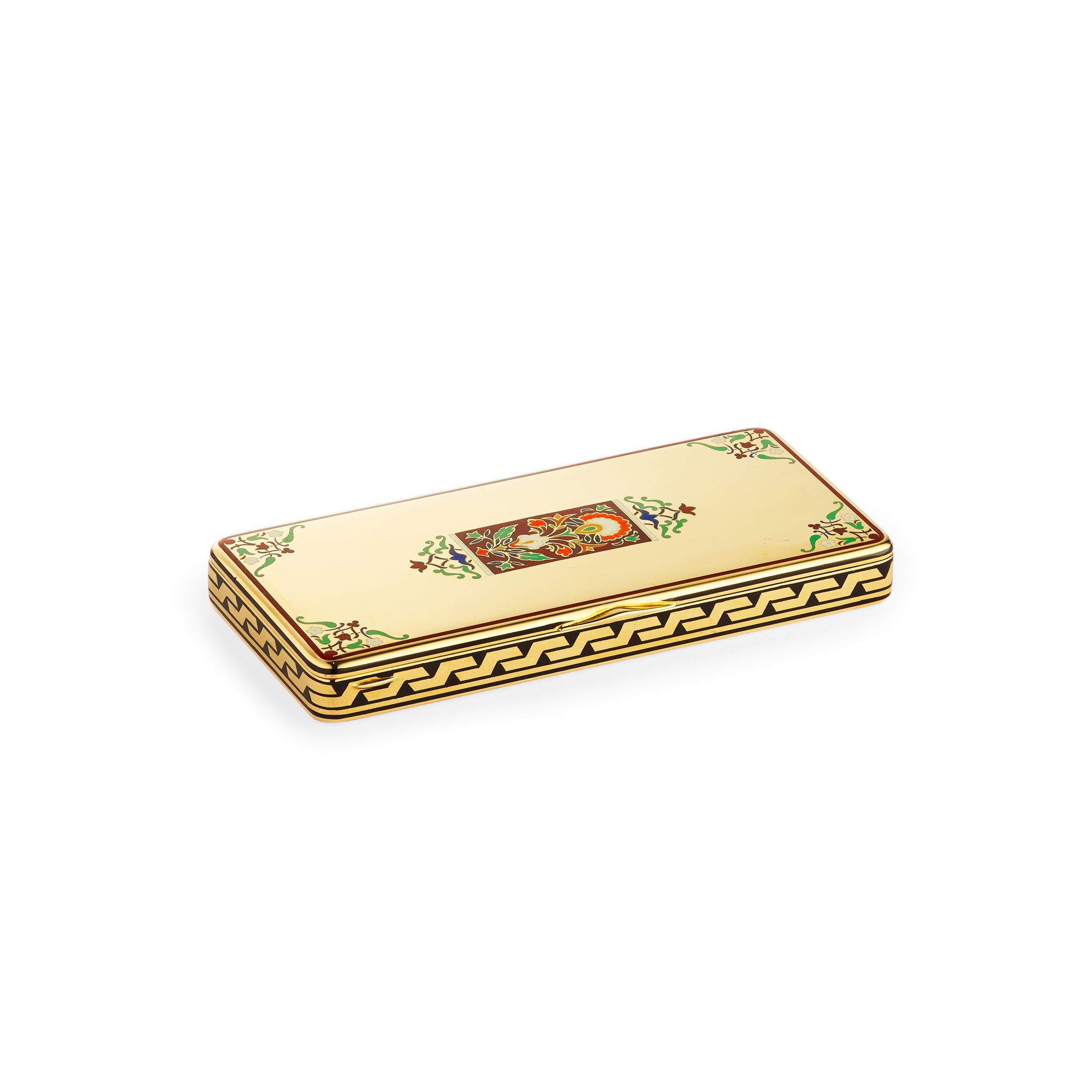
Creation details
- Creation year 1925
- Material Gold
- Usage Other
- Dimensions 87 × 41 × 15 mm
In the 1920s, cigarette cases were particularly in vogue and were to be found in a variety of forms and styles, as observed in their decoration, which frequently borrowed from Art Deco vocabulary.
This piece is made of yellow gold with an ensemble of motifs in champlevé enamel on its lid. In the middle, a rectangular vignette with a brown background is decorated with a polychrome floral and plant frieze, inspired by Persian illuminations. A band of white enamel runs along the top and bottom of the vignette, together with rinceaux and palmettes that also highlight the four corners of the cigarette case. Lastly, a geometric frieze in black enamel runs around the edge of the whole case.
Schererazade
Following the publication of Joseph-Charles Mardrus’s French translation of the Thousand and One Nights1Joseph-Charles Mardrus, Le Livre des Mille nuits et Une nuit [16 volumes] (Paris: Éditions de La Revue blanche, 1899–1904). between 1899 and 1904, the wondrous Orient, as evoked by Scheherazade, was the subject of numerous theater and dance productions, most notably the famous ballet Scheherazade performed by the Ballets Russes at the Paris Opera on June 4, 1910.
Oriental influence in the 1920’s fashion arts
The year following Scheherazade performance, Paul Poiret adapted Leon Bakst’s imaginative costumes as outfits for Parisian women.2This is illustrated by one of his creations called Robe et sarouel, 1911, silk, cotton, and metal. Metropolitan Museum, New York (Inventory Number: 1983.8a and b). Guests at the costumed ball he organized in May 1911 wore harem pants and delicate silk dresses embroidered with precious stones.
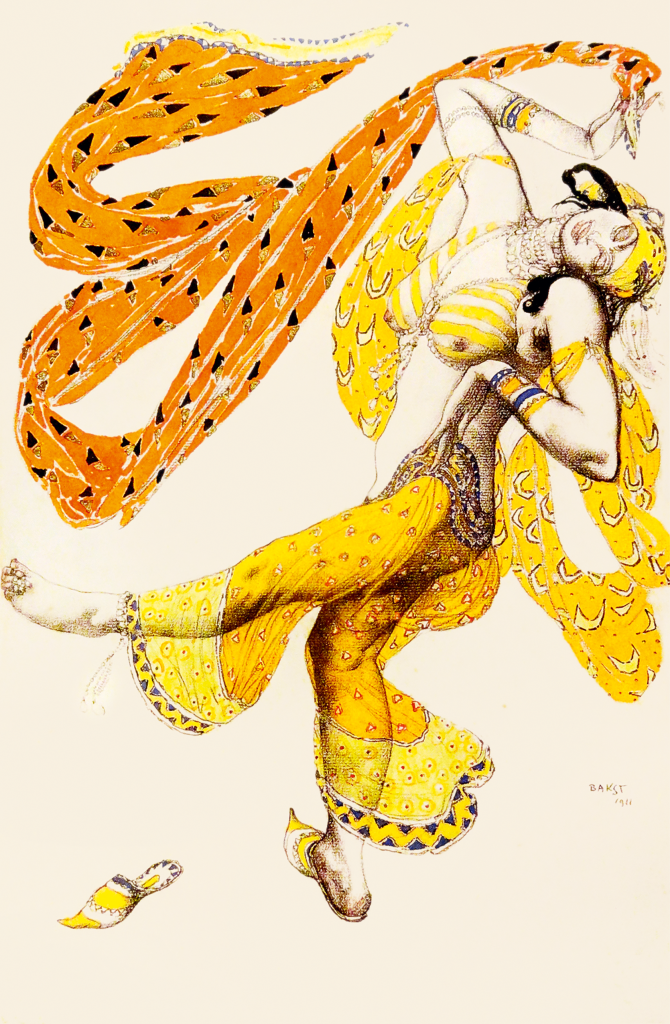
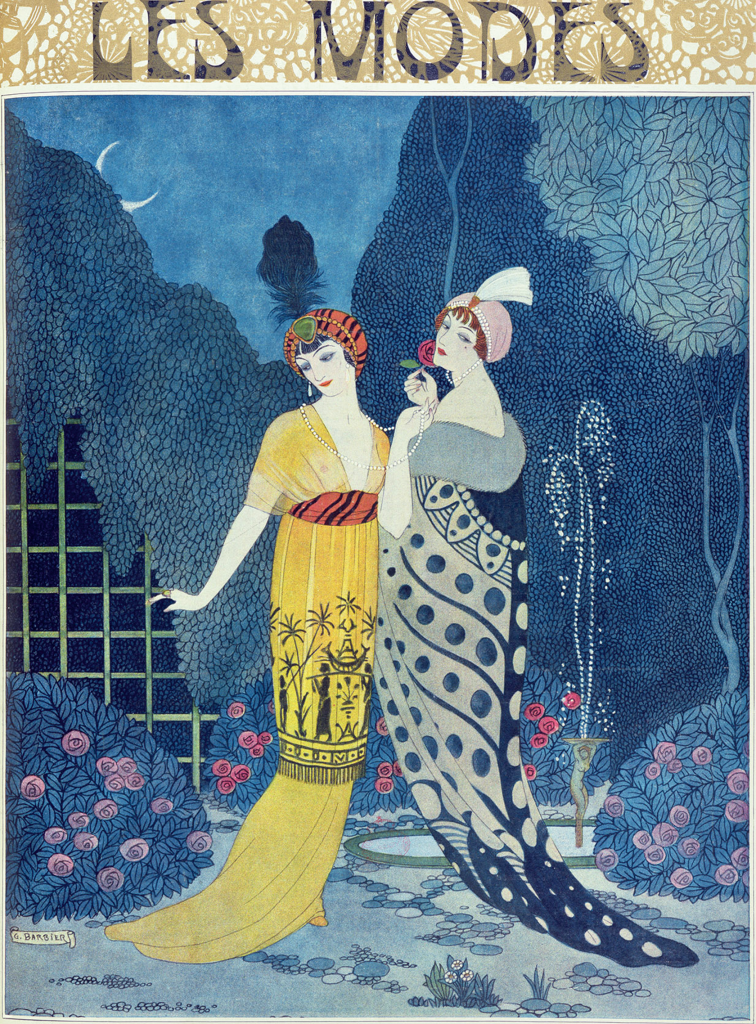
To enliven this new wardrobe that took hold in the 1920s, jewelers looked to Islamic art. “Velvet turbans,” considered acceptable “even in the daytime,” were decked with “Oriental-style pieces of jewelry.”3Colette d’Avrily, “La mode et les modes,” Les Modes (December 1926): 12. This taste for Oriental exoticism was also found in accessories, as vanity and cigarette cases of the period show, including this one dating from 1925.
To go deeper
